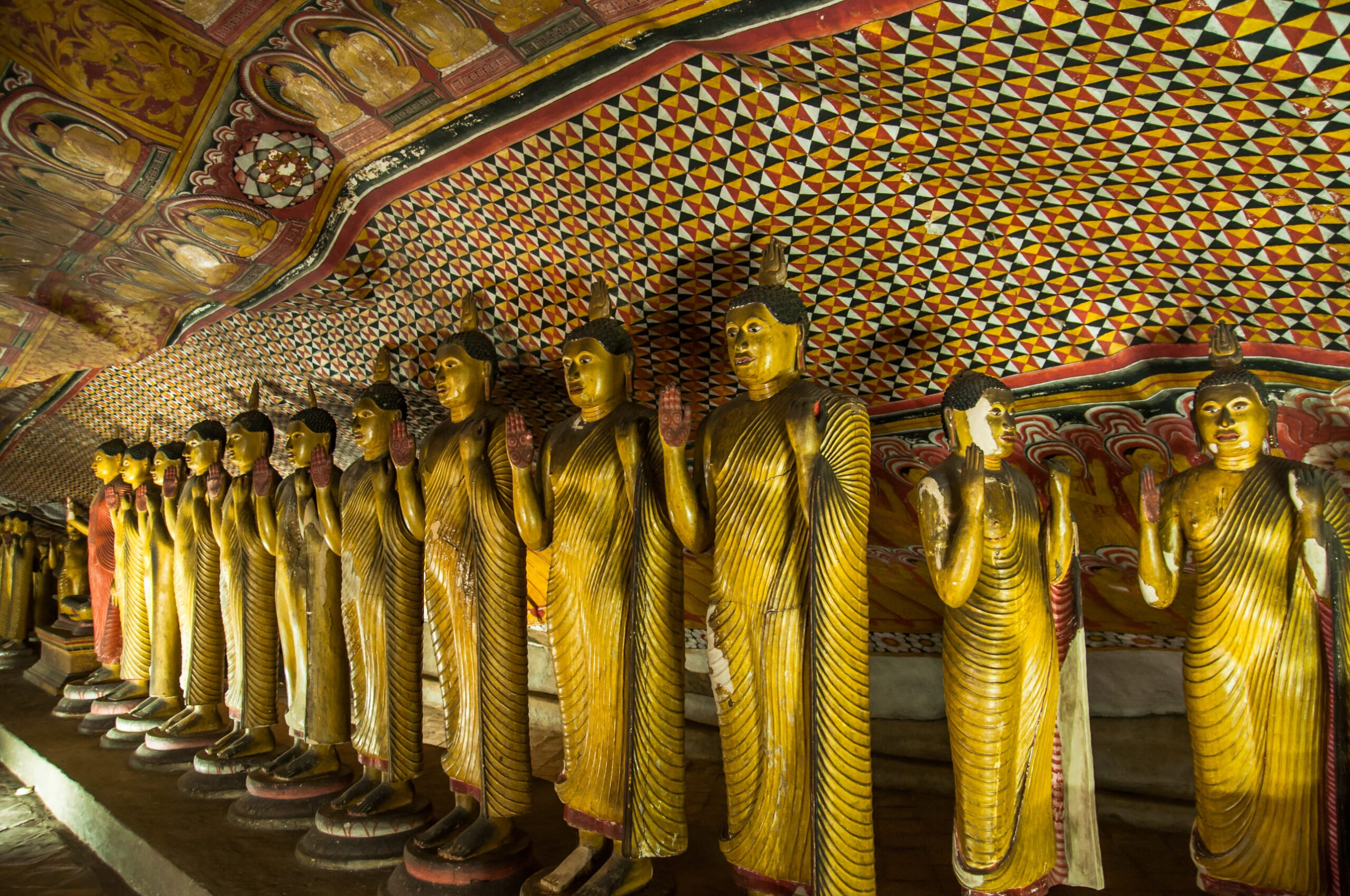Itineraries in the north of Sri Lanka will expose you to thrilling safari days, intermittent visits to stirring cultural & historic sites … and perhaps at the beginning or end of the itinerary, a bit of time spent searching for blue whales.
Highlights in the north include Wilpattu National Park with its diverse flora & fauna; Minneriya Park with its huge elephant population; the ancient fortress palace at Sigiriya Rock; the ruined city of Anuradhapura with its amazing stupas; the haunting Cave Temples at Dambulla; the impressive ruins of yet another ancient city at Polonnaruwa; and intriguing little Trincomalee, threshold to whale watching trips.
Wilpattu National Park : (Willu-pattu; Land of Lakes) is one of the finest safari choices. Its unique ecosystem is concentrated with “Villus” or sand-rimmed lakes which are filled by rainwater offering habitat to water birds and fresh water to 31 species of mammals. Between fifty and sixty lakes are found within the boundaries of the park, in both dense forest and scrubland, providing habitat for elephants, leopards, water buffalo, the sloth bear, monitor lizards, crocodiles and all manner of small mammals such as the mongoose … and, of course, monkeys. Known also for its copper-red soil which creates strong contrast to the forest greens & the colors of the wildlife, the park is a photographer’s dream. As you’ll be one of few tourists roaming the park, it’s a pristine and ideal safari experience.
Minneriya National Park : This spectacular site exists, to a great extent, thanks to Sri Lanka’s King Mahasena who, in the 3rd century AD, designed & oversaw the construction of sixteen large reservoirs and two irrigation canals, changing the landscape and lifestyle of Sri Lanka forever. The presence of multiple wildlife parks and, indeed to much agriculture & civilization, is due to his ingenuity and foresight. The large Minneriya Reservoir is the main source of year-round water in Minneriya Park and therefore also responsible for the abundance & diversity of life. The park encompasses diverse ecosystems offering dramatically changing landscape. Minneriya is best-known, however, for its yearly gathering of Asian Elephants when 200 to 400 elephants of all ages (some reports say up to 700) come together during the dry season to munch the lush grass and cool off in the lakes. The park is home to more than 20 mammal species and to significant bird life.
Kaudulla : Nearby to Minneriya is Kaudulla National Park, a sanctuary for birds, and one of the areas to greatly benefit from King Mahasena’s water system. Although visitors tend to come to view awesome numbers of birds circling overhead & filling the treetops, Kaudulla also offers a number of large mammals : elephants, sloth bears, Sri Lankan leopards, deer, monkeys and wild boar.
Sigiriya Rock : This UNESCO-listed ancient rock fortress is perhaps the most recognized of Sri Lanka’s landmarks. It rises dramatically out of an deep, green forest & red earth and was built in 495 AD, serving as a palace & natural fortress for King Kasyapa. The grounds are spectacular but you’ll want to climb to the top of the rock to explore the ruins and marvel at the breathtaking views.
Anuradhapura : The vast Dagoba stupa, which contains lovely carvings, dates back to the 1st century and stood, initially, at 100m high (one of the biggest structures of the ancient world, along with the Egyptian pyramids). You’ll also want to visit Mihintale Peak in Anuradhapura which is reputed to be the spot where Buddhism was introduced to Sri Lanka. This pilgrimage site is endowed with beautiful ruins and two remarkable stupas at the summit.
Cave Temples, Dambulla : Also a World Heritage Site, the Dambulla Cave Temple complex, developed in the 1st century BC, is considered to be the biggest (and best-preserved) cave-monastery. The colors on the statues are astonishingly fresh and unspoiled, highlighted by the natural light which seeps into the caves. There are five separate shrines which house more than150 striking Buddha statues and murals.
Polonnaruwa : In the North Central Province lies one of the most admired sets of ancient buildings in Sri Lanka. The area known as the Quadrangle would have been the religious heart of the city and the detail of what remains here is intricate and stunning. A bit out of the center, you’ll find the Gal Vihara, or Stone Shrine, with its four stunning Buddha statues all carved from the same granite slab. Kiri Vihara Dagoba (the name means “milk white”) was constructed in the 6th century and was found in the jungle after being buried 700 years. To archaeologists’ delight, the original white lime plaster was in nearly perfect condition.
Trincomalee : This coastal town, located on the northeast coast, is the base for much of the whale watching in Sri Lanka. These are all day trips and easy to add on to your culture & safari itinerary ! Trincomalee also offers a couple of lovely Hindu temples (particularly the colorful Koneswaram Kovil, dedicated to Shiva, located within the walls of Fort Frederick). The beaches are beautiful and easily accessible. The whalel season here runs from June to September.




























